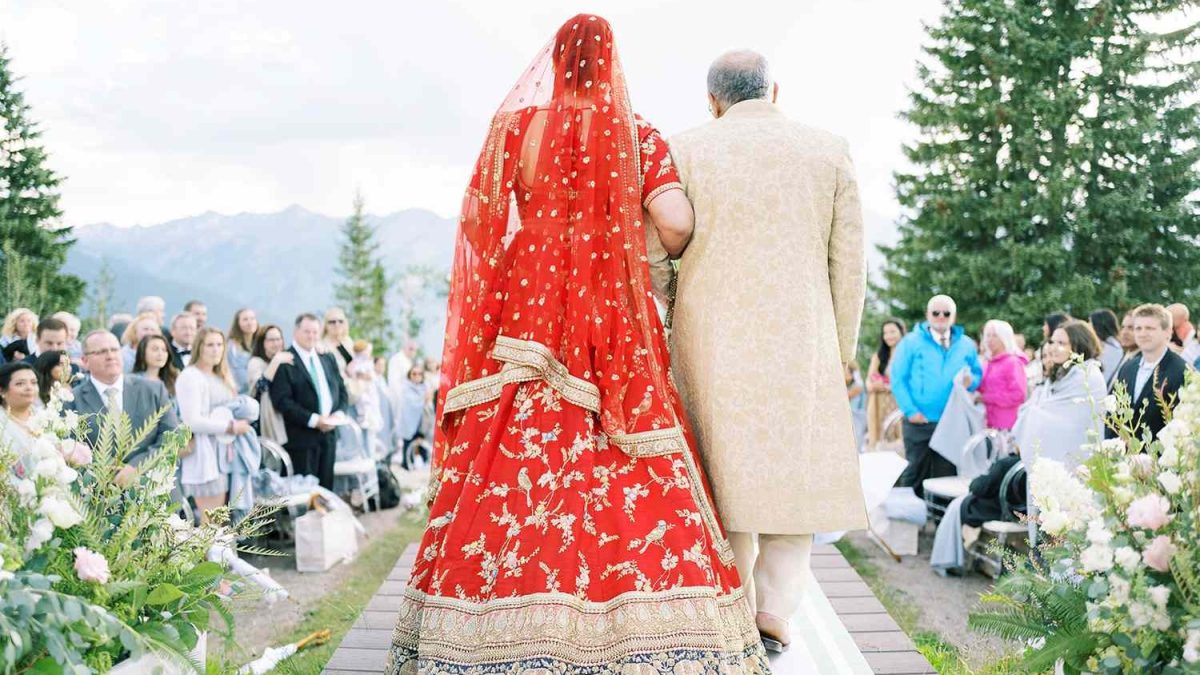Marriage is a very important step in the lives of the couple and their families. There might be toasting with Paso Robles wine or a bottle of champagne. However you plan it, marriage is definitely a significant milestone celebrated in diverse ways across cultures and regions around the globe. From elaborate ceremonies to meaningful rituals, the traditions surrounding marriage reflect the values, beliefs, and customs of each society. In this exploration, we’ll delve into some of the most interesting ways people celebrate marriage in various parts of the world, showcasing the richness and diversity of matrimonial customs.
-
Indian Wedding Extravaganza
Indian weddings are renowned for their grandeur, vibrancy, and rich cultural traditions. A traditional Indian wedding typically spans several days and involves a series of intricate ceremonies and rituals. One of the most elaborate customs is the Baraat, where the groom arrives at the wedding venue in a procession accompanied by his family and friends, often riding a decorated horse or elephant. The ceremony itself is a colorful affair, with rituals such as the exchange of garlands, the tying of the sacred thread (Mangalsutra), and the circling of the sacred fire (Saptapadi). The festivities culminate in a joyous celebration filled with music, dance, and sumptuous feasts, leaving a lasting impression on all who attend.
-
Japanese Tea Ceremony
In Japan, marriage is celebrated with a blend of tradition and elegance, often highlighted by the tea ceremony known as “chaji” or “chakai.” This serene and formal ritual symbolizes harmony, respect, and tranquility, essential elements of a successful marriage. During the ceremony, the bride and groom serve tea to their guests with graceful movements and meticulous attention to detail. The act of sharing tea represents the bond between the couple and their families, as well as the beginning of a new chapter together. The simplicity and beauty of the tea ceremony encapsulate the essence of Japanese marital customs, emphasizing grace, mindfulness, and reverence for tradition.
-
Nigerian Igbo Marriage Ceremonies
In Nigeria, among the Igbo ethnic group, marriage ceremonies are colorful, lively affairs steeped in cultural significance. One of the distinctive customs is the Igba Nkwu ceremony, also known as the wine-carrying ceremony. During this ritual, the groom presents palm wine to the bride’s family as a gesture of goodwill and respect. The bride’s family then welcomes the groom and his relatives, symbolizing the union of two families. Traditional dances, songs, and performances add to the festive atmosphere, creating a sense of community and shared joy. Igbo marriage ceremonies celebrate not only the union of two individuals but also the bonds of kinship and heritage that unite their families.
-
Scandinavian Handfasting Ritual
In Scandinavian countries such as Sweden and Norway, couples often incorporate elements of the ancient handfasting ritual into their wedding ceremonies. Handfasting involves the binding of the couple’s hands together with ribbons or cords, symbolizing their commitment and unity. This symbolic gesture dates back to Viking times and represents the joining of two souls in marriage. The couple may choose to recite personalized vows or exchange rings as they declare their love and dedication to each other. Handfasting ceremonies emphasize the importance of partnership, equality, and mutual respect in marriage, echoing the values of Scandinavian culture.
-
Mexican Lazo Ceremony
In Mexico, the Lazo ceremony is a cherished tradition observed in many Catholic weddings. During this ritual, a decorative cord or lasso is draped in a figure-eight shape around the shoulders of the bride and groom by their sponsors or padrinos. The Lazo symbolizes the everlasting bond between the couple and serves as a visual representation of their union. As the cord is placed around them, the couple receives blessings and prayers for a long and harmonious marriage from their loved ones. The Lazo ceremony is a poignant expression of faith, love, and familial support, embodying the deep-rooted traditions of Mexican culture.
Conclusion
Marriage is a universal institution celebrated in diverse and fascinating ways across the globe. From the opulent festivities of Indian weddings to the serene elegance of Japanese tea ceremonies, each culture brings its own unique customs and rituals to the joyous occasion of matrimony. Whether it’s the vibrant colors of Nigerian Igbo ceremonies or the symbolic gestures of Scandinavian handfasting, these traditions reflect the values, beliefs, and heritage of the communities that practice them. By honoring these customs, couples reaffirm their commitment to each other while embracing the rich tapestry of human culture and tradition.
Categories
Know about joe bidon and how he led his presidential campaign to one of the biggest victory for America.


